
Do you have a question about the MSI X299 XPOWER GAMING AC and is the answer not in the manual?
| Socket | LGA 2066 |
|---|---|
| Chipset | Intel X299 |
| Form Factor | ATX |
| Memory Slots | 8 |
| Maximum Memory | 128GB |
| PCIe 3.0 x16 Slots | 4 |
| SATA 6Gb/s Ports | 8 |
| U.2 Ports | 1 |
| Wireless | Yes |
| Wi-Fi | 802.11ac |
| Audio | Realtek ALC1220 |
| RAID Support | 0, 1, 5, 10 |
| M.2 Slots | 2 |
| USB 3.1 Gen2 Ports | 2 |
| USB 2.0 Ports | 6 |
Lists all included motherboard accessories and components.
Guidelines for safely handling sensitive components and preventing damage.
Warnings on humidity, temperature, and proper operational procedures.
Lists necessary tools and components for system assembly.
Step-by-step guide for installing the CPU.
Step-by-step guide for installing RAM modules.
Instructions for connecting case front panel connectors.
Guide for mounting the motherboard into the PC chassis.
Instructions for connecting SATA storage devices.
Step-by-step guide for installing the graphics card.
Guide for connecting keyboard, mouse, audio, and display.
Instructions for connecting ATX and CPU power supply cables.
Final steps to power on the computer.
Details on processor, chipset, RAM, and PCIe slots.
Information on networking and wireless modules.
Details on SATA, M.2, U.2, RAID, and USB ports.
Lists all onboard connectors and rear I/O ports.
Details on onboard controls and indicators.
Visual representation of component connections and data flow.
Description of all rear panel connectors and features.
Explanation of LAN port LED indicators.
Diagram illustrating audio jack usage.
Explanation of the audio manager's main features and settings.
Description of the audio device detection dialog.
Steps for attaching and positioning the Wi-Fi antennas.
Identifies CPU socket, DIMM slots, power, and fan connectors.
Identifies front panel, storage, and PCIe connectors.
Introduction and important notes for CPU installation.
Recommendations for dual/quad channel memory configurations.
Details on PCIe slots and bandwidth tables for different CPUs.
Steps for installing multiple graphics cards in SLI configuration.
Step-by-step instructions for installing M.2 modules.
Guide for installing the M.2 expansion card.
Details on SATA ports and their usage with M.2/PCIe slots.
Pin assignments for front panel connectors.
How to use the knob for CPU overclocking.
Details on OC Retry, OC Force Enter BIOS, and Slow Mode jumpers.
Pin details for power supply connections.
Details for JUSB1~2 connectors.
Details for JUSB3~4 connectors.
Details for JUSB5 connector and charger port.
Details on PWM and DC fan connectors.
Details for T_SEN1 connector.
Details for JAUD1 connector.
Details for JCI1 connector and warning reset.
Details for JTPM1 connector.
Instructions for resetting BIOS via JBAT1 jumper.
Details on BIOS_SW1 and recovering BIOS.
Description of power and reset buttons.
Description of BCLK/Ratio adjustment buttons.
Details for VRAID1 connector.
Details for JLED1 connector.
Status indicators for CPU, DRAM, VGA, BOOT, and PCIe slots.
Indicators for memory status and XMP mode.
Indicators for fan control mode, speed, and BIOS operation.
Explanation of the debug code LED and boot phases.
Reference tables for SEC, PEI progress and error codes.
Reference tables for DXE progress and error codes.
Reference tables for S3 resume and recovery codes.
Information on ACPI states and CPU temperature display.
Steps to update LED firmware via software.
Methods to access BIOS and function key reference.
Procedures for resetting and updating BIOS with M-FLASH/Live Update.
Steps for updating BIOS using BIOS FLASHBACK+.
Explanation of EZ Mode interface and basic settings.
Details on information display, function buttons, and favorites.
Explanation of Advanced Mode interface and main menu options.
Configuration of system status, SATA/M.2/U.2 info, and system information.
Configuration of PCI Express link speed and ACPI parameters.
Settings for network boot, SATA mode, and USB controllers.
Settings for power management and Windows OS behavior.
Settings for fast boot, secure boot, and wake-up events.
Options for waking the system from sleep states.
Settings for boot order, mode, and logo display.
Password protection and Trusted Computing configuration.
Options for saving changes, discarding, or restoring defaults.
Overview of OC explore modes and basic CPU ratio settings.
Detailed CPU ratio, Turbo Boost, and XMP configurations.
Settings for CPU base clock and dynamic frequency control.
Configuration for DRAM timing, frequency, and digital power controls.
Voltage control settings and CPU specifications display.
Settings for virtualization, prefetchers, AES, and thermal monitor.
Settings for C-states, power limits, and VR protection.
Step-by-step guide for BIOS updates using M-FLASH.
Saving, loading, and clearing OC profiles.
Guide for installing the operating system.
Procedures for driver and utility installation.
Managing MSI applications and software updates.
Introduction to the software for driver and BIOS updates.
Steps for system updates and using Total Installer.
Introduction to the system monitoring and adjustment utility.
Managing CPU fan speed and voltage settings.
Configuring advanced voltage, fan, DRAM, and recording settings.
Remote control features and system monitoring gadgets.
Controlling system performance for gaming.
Configuring on-screen display and display optimization.
Optimizing system for VR experience.
Defining custom hotkeys for gaming.
Configuring mouse macros and DPI settings.
Selecting system performance modes.
Enabling USB, Storage, VR, and Optane Boost.
Controlling synchronized RGB LED lighting effects.
Configuring motherboard specific LED effects.
Creating Windows installation USB and Software RAID.
Steps for creating a software RAID array.
Creating and managing virtual RAM disks.
Traffic shaping and network bandwidth configuration.
Optimizing bandwidth usage through speed tests.
Watching game streams and tutorials with hotkey controls.
Configuring audio effects, profiles, and volume.
Configuring microphone effects and loopback.
Details on audio launchpad and recorder.
FPS sound localization and radar settings.
System requirements and initial login/registration for XSplit Gamecaster.
Using Gamecaster for live streaming and recording gameplay.
Configuring social media sharing and stream/record settings.
Managing recordings and configuring camera settings.
Introduction to the SteelSeries device configuration platform.
Customizing device settings and profiles.
Software for tuning, testing, and monitoring system overclocking.
Gathering and displaying detailed system hardware information.
Playing PC games in 3D VR with headset support.
Managing games and configuring virtual screen parameters.
Adjusting screen, game, and audio settings.
Replacing or blurring backgrounds in video applications.
Overview of different RAID levels and their characteristics.
Entering the IRST Option ROM for RAID setup.
Step-by-step guide to creating RAID volumes.
Steps to delete existing RAID volumes.
Procedure to revert RAID disks to standard configuration.
Handling degraded RAID arrays and missing drive members.
Steps for rebuilding a RAID array after drive failure.
Creating RAID arrays using M.2 PCIe SSDs via Genie or UEFI.
Steps to remove M.2 PCIe SSD RAID arrays.
Prerequisites for installing Optane memory.
Step-by-step guide for Optane memory installation.
Steps to enable Optane memory and important cautions.
Steps to disable and remove Optane memory.
Procedure to disable Optane memory and revert SATA mode.
Solutions for no power or no signal issues.
Troubleshooting common system problems.
Statement regarding FCC rules and interference.
Information on EU directives and CE marking.
Guidelines for battery disposal and chemical substances.
Environmental policy and WEEE statement.
Information on wireless radio usage and RF restrictions.


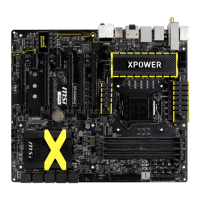
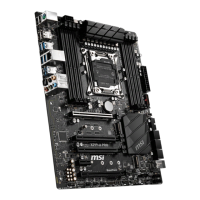
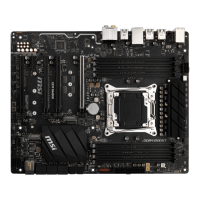
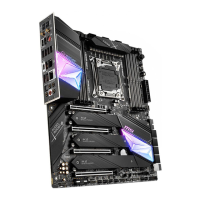

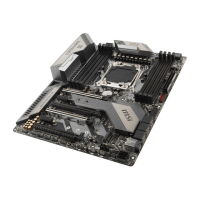
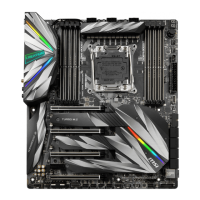
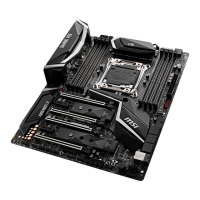
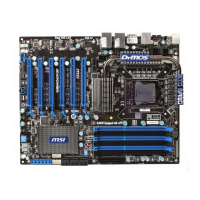

